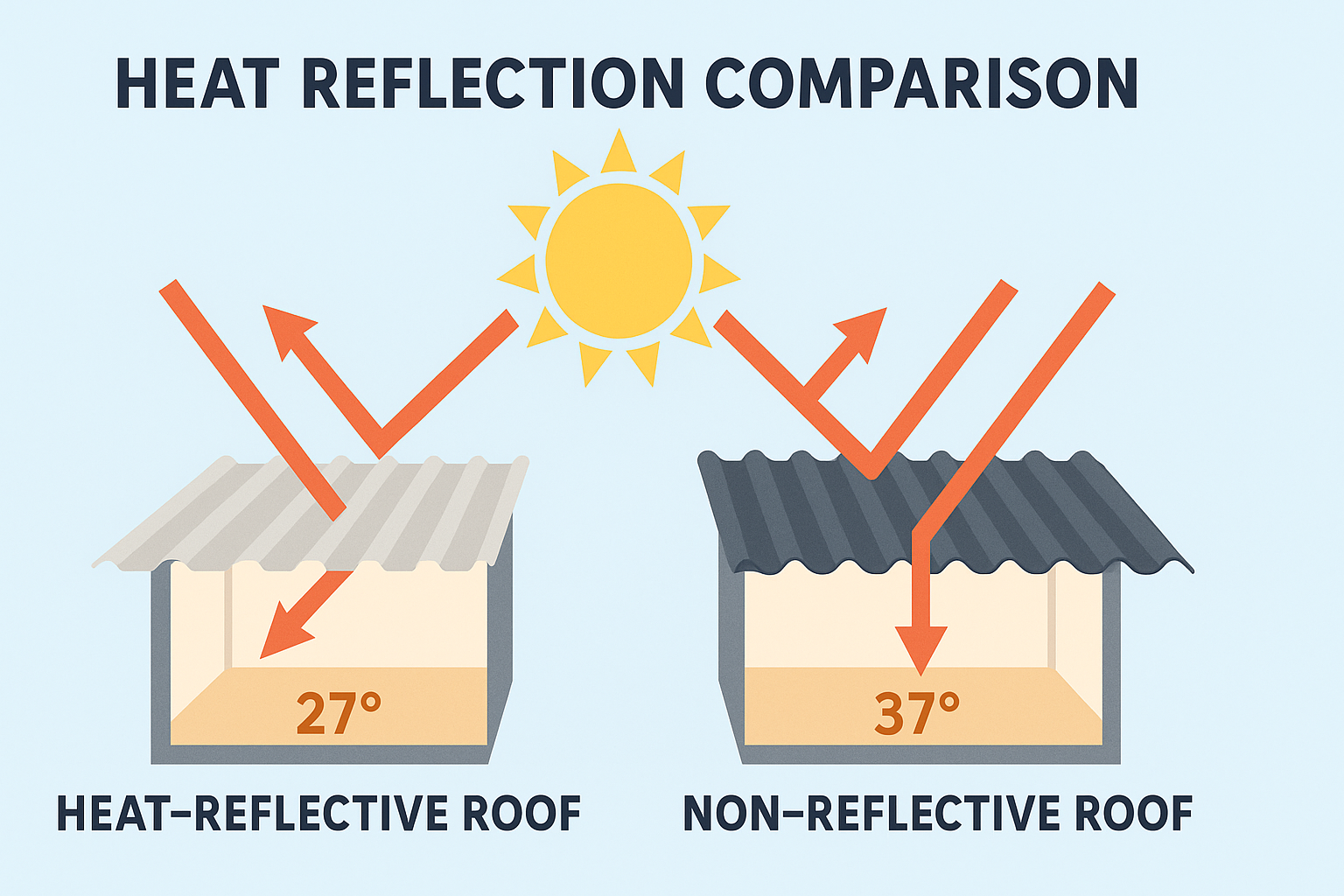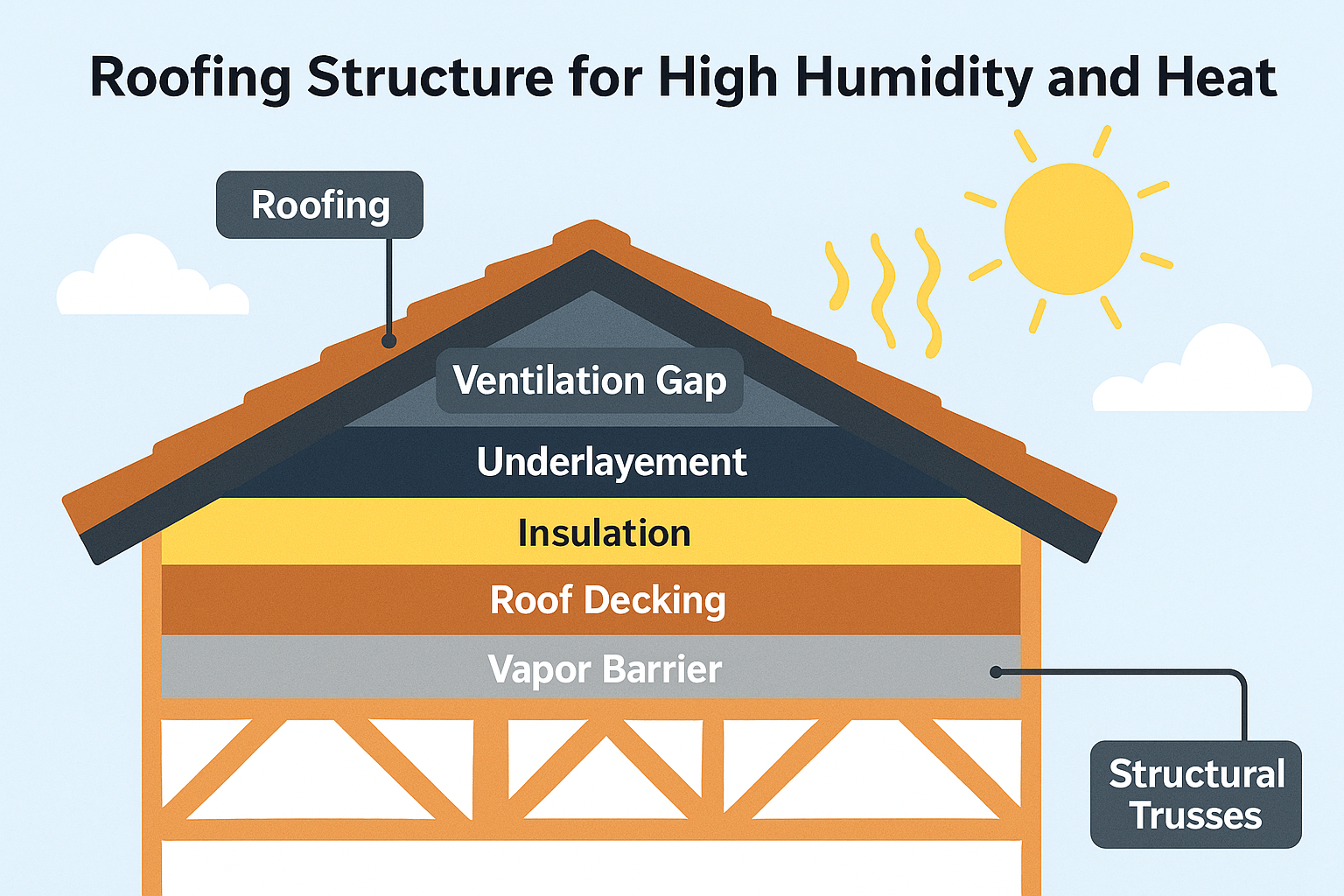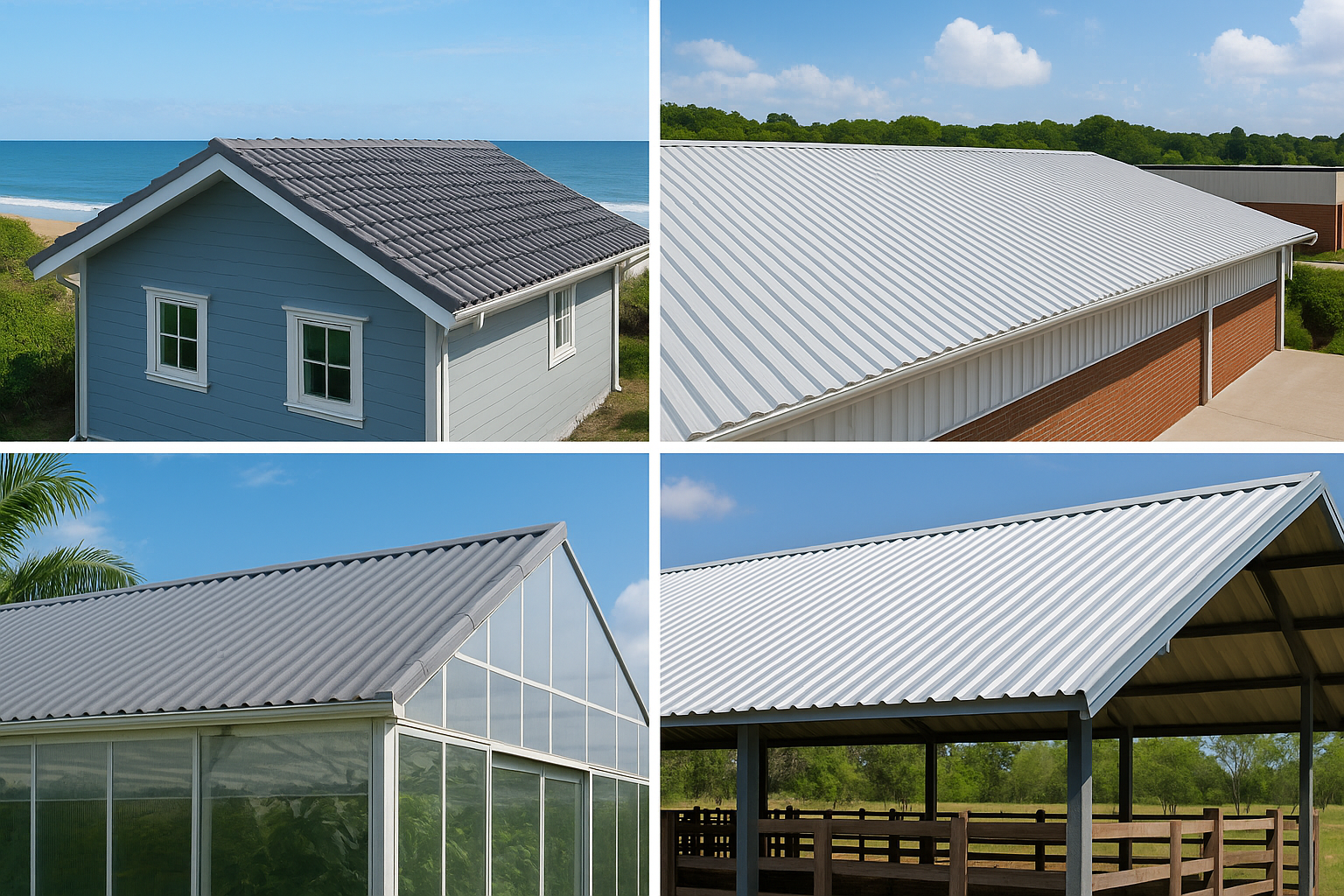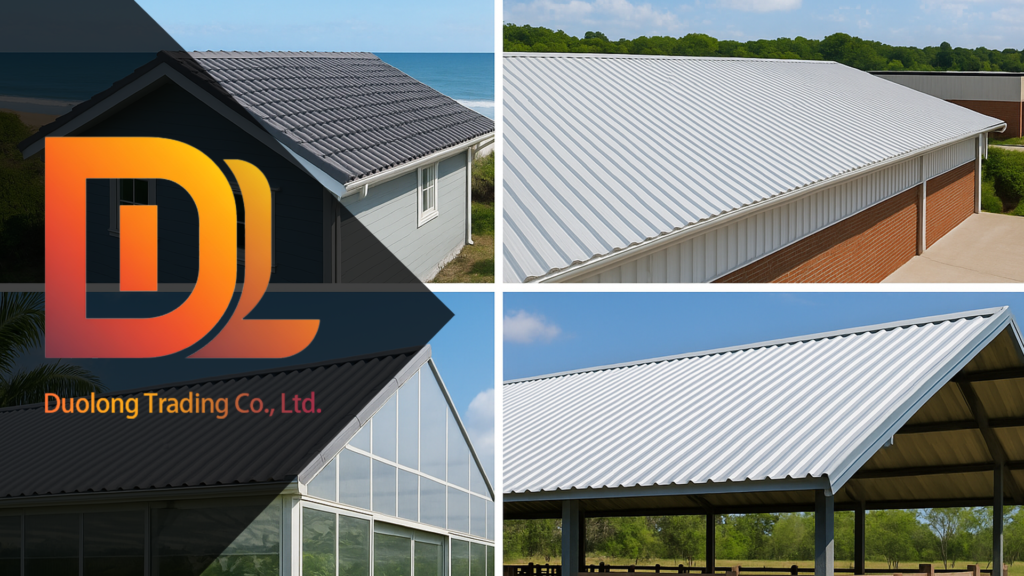In regions where heat, humidity, and intense sunlight are constant challenges—such as Southeast Asia, Central Africa, and the coastal tropics—choosing the right roofing material is not just a design decision, but a long-term investment in performance and durability. The wrong choice can lead to rapid aging, costly maintenance, and structural issues such as leaks, corrosion, and thermal expansion. Unfortunately, most global content on “heat-resistant” or “moisture-proof” roofing still focuses on small-scale residential DIY projects, offering little practical guidance for commercial or industrial-scale buyers.
This guide is designed to address that gap. Whether you’re a building materials wholesaler, a project contractor, or a government procurement partner, you’ll find here a data-backed comparison of leading roofing solutions—ASA synthetic resin tiles, APVC composite sheets, and FRP transparent panels—specifically engineered for hot and humid climates. Our aim is to help you reduce long-term maintenance costs, avoid material failure, and choose the right roofing system for tropical and coastal environments in 2025 and beyond.
Climate Challenges in Humid and Hot Regions
Roofing systems in humid and hot environments face a unique set of climatic stresses that can accelerate material failure if not properly addressed. In tropical and subtropical zones—such as Indonesia, Nigeria, Thailand, and coastal cities in East Africa—the combination of high moisture, UV radiation, salt-laden air, and intense heat creates a harsh operating environment for most traditional roofing materials.
Constant humidity can cause materials like wood or low-grade metal to rot, rust, or deform. Prolonged exposure to UV rays results in surface fading, brittleness, and thermal expansion in polymer-based materials. In coastal regions, salt air corrodes unprotected metals at an accelerated rate, shortening the lifespan of conventional steel or aluminum roofing sheets. Additionally, heavy seasonal rains in monsoon-prone areas increase the risk of leakage and structural water damage, especially when poor-quality roofing is used.
To achieve long-term performance in such climates, roofing solutions must be specifically designed to withstand multiple stressors simultaneously—moisture, heat, UV, and corrosion. Understanding these environmental risks is the first step toward selecting a roofing system that can perform reliably year after year in tropical and coastal applications.

Key Roofing Material Performance Criteria
When selecting roofing materials for hot and humid regions, the decision should be based not only on aesthetics or price but on how well the material can withstand the specific environmental stressors. Below are five essential performance criteria that determine whether a roofing solution is suitable for tropical and coastal conditions:
- Heat Reflectivity Materials must reflect solar radiation rather than absorb it. High reflectivity helps keep indoor temperatures lower, reducing air-conditioning costs in warehouses, homes, and commercial spaces.
- Corrosion Resistance In coastal areas with high salt content in the air, corrosion is a major concern. Roofing systems should resist rust and deterioration to ensure long-term integrity, especially for industrial or market-use structures.
- Moisture Resistance Prolonged exposure to humidity and rainfall can lead to mold, warping, or water infiltration. Waterproofing capacity is critical, especially during monsoon seasons.
- UV and Color Fading Resistance Intense sunlight degrades many conventional roofing materials. A UV-resistant surface maintains color stability and material strength over time, which is crucial for aesthetics and durability.
- Ease of Installation and Maintenance For contractors and procurement teams, roofing solutions that are lightweight, modular, and easy to install save time and labor costs. Low-maintenance options reduce long-term operational expenses.
Understanding and evaluating these criteria allows buyers to make informed decisions that minimize the risk of early failure and maximize performance over the roof’s lifespan.

Cost vs Longevity: Which Material Offers the Best Value?
For buyers and developers operating in tropical and coastal regions, choosing a roofing material is not just a matter of upfront price—it’s about total lifecycle value. A cheaper solution may save on initial costs, but if it requires frequent repairs, replacements, or cleaning, the total expenditure can quickly outweigh the investment in a more durable alternative.
Let’s examine how ASA, APVC, and FRP perform over time in terms of value:
| Material | Avg. Lifespan (Years) | Initial Cost (Per m²) | Maintenance Frequency | UV & Corrosion Resistance | ROI Potential |
| ASA Tiles | 25–30 | Medium | Very Low | Excellent | High |
| APVC Sheets | 15–20 | Low to Medium | Low | Good | Medium to High |
| FRP Panels | 10–15 | Medium | Medium | Moderate to Good | Medium |
ASA tiles offer one of the highest ROI levels in tropical settings due to their outstanding durability and minimal maintenance. APVC is cost-effective for large-scale industrial use where corrosion is a concern, while FRP, though less durable, adds high functional value in applications where natural lighting is key.
When calculating roofing costs, procurement teams should consider not only material pricing but also transportation, installation labor, weather-related wear, and the costs of potential downtime due to roof failure. A higher-quality roof may cost more upfront, but it often prevents thousands of dollars in future operational losses.
Expert Recommendations for Different Projects
Not all roofing materials perform equally across different applications. Selecting the right material should depend not only on climate but also on the type of building, usage intensity, and maintenance access. Below are expert recommendations for selecting roofing solutions tailored to specific project types in tropical and coastal environments:
- Residential Homes & Villas
- Recommended Material: ASA Synthetic Resin Tiles
- Why: Offers long-term aesthetics, superior UV resistance, and a clean architectural appearance. Ideal for upscale homes, villas, and resorts where roof color and shape retention is important.
- Warehouses & Industrial Plants
- Recommended Material: APVC Corrugated Sheets
- Why: Provides high corrosion resistance, thermal insulation, and durability under heavy operational use. Perfect for logistics hubs, production facilities, and storage buildings in humid climates.
- Markets, Walkways & Agricultural Facilities
- Recommended Material: APVC + FRP Panels (Hybrid)
- Why: APVC handles structural coverage and corrosion control, while FRP panels offer natural lighting. Suitable for farmers’ markets, animal shelters, public corridors, and greenhouses.
- Coastal Government or Institutional Projects
- Recommended Material: ASA Tiles or ASA + FRP Combination
- Why: ASA ensures high-end, durable finish in coastal conditions. Adding FRP for partial daylight improves energy efficiency and functionality in public-use buildings.
- Temporary or Lightweight Structures
- Recommended Material: APVC or FRP (depending on budget)
- Why: Lightweight, easy to install, and cost-effective for mobile buildings, workshops, or small-scale public facilities.
For complex projects, many developers today adopt hybrid roofing systems, combining ASA tiles for primary coverage with FRP panels for skylight zones or ventilation strips. This ensures both thermal control and natural illumination, especially important in regions where electricity costs are high or outages are frequent.

Making the Right Roofing Choice for Your Climate and Budget
Choosing the right roofing material for hot and humid climates is more than a product decision—it’s a long-term strategy to reduce maintenance, prevent early failure, and ensure consistent performance under extreme weather conditions. ASA, APVC, and FRP each offer unique advantages tailored to different project types and environmental demands.
At Duolong, we specialize in roofing solutions engineered for tropical and coastal applications. Whether you’re planning a government project, sourcing for industrial buildings, or developing residential properties in Southeast Asia, Africa, or the Middle East, we provide materials optimized for your climate zone and budget.
Frequently Asked Questions (FAQ)
1. What is the best roofing material for hot and humid climates?
The best materials are those that resist UV radiation, moisture, and corrosion—such as ASA synthetic resin tiles, APVC corrugated sheets, and FRP panels. These options outperform traditional metal or clay roofs in durability and maintenance cost.
2. Can plastic roofing handle salt air near the ocean?
Yes. ASA and APVC roofing are designed to resist salt corrosion, making them ideal for coastal buildings. They don’t rust like metal and maintain their structural integrity even in high-salinity environments.
3. How long do ASA roofing tiles last in tropical weather?
ASA tiles typically last 25–30 years in tropical and coastal zones, maintaining color and strength without fading, cracking, or warping.
4. Is FRP roofing suitable for full coverage or only skylights?
FRP is ideal for skylights, walkways, and daylighting zones. While it’s durable, it’s best used in combination with ASA or APVC for structural roofing, not as the sole material for full roof coverage.
5. Are these roofing materials easy to install and transport?
Yes. All three materials—ASA, APVC, and FRP—are lightweight, modular, and easier to transport and install than heavy traditional tiles or metal sheets. This reduces labor time and shipping costs for projects in remote or rural regions.


